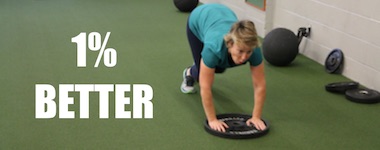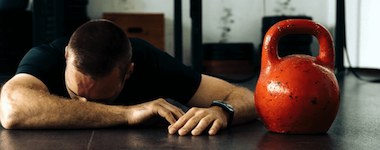Training your Core
I want to share with you all a few of my favorite exercises to strengthen your core, which in the end can help to avoid injuries (especially back injuries). I am going to tell you about my three favorite core specific exercises, why they are my favorites, and different variations of these exercises. Notice I said core specific. There are hundreds of exercises to train the core. Some of the best core exercises don’t even focus on the core. Some examples of these are squat, deadlift, and most unilateral (single sided) exercises. These three are sure to help strengthen you up while in a safe and stable manner.
My Three Favorites and Why
My three favorite ways to train the core are planks, anti-rotation holds, and dead bugs. These are all core stability exercises, which are most important for protecting your back and transferring power throughout your body. I strongly prefer these stability exercises over movement based exercises like crunches or sit ups that have excessive flexion (bending) of the spine. Some believe that exercises like sit ups where you are constantly bending your low back can be very harmful. The analogy of bending the tab on a pop is often used to explain this. You can bend the tab several times but eventually it is going to break. This thought process is backed by extensive research, primarily done by Dr. Stuart Mcgill from the University of Waterloo. Stability exercises are also most beneficial for the activities of daily life. For example when you reach to grab something you are stabilizing your core to maintain your balance and posture. How often do you forcefully bend over like you do in a crunch? The only example I can think of is getting out of bed in the morning.
Explanations and Variations

In the plank you will be on your elbows and your toes and trying to stay as flat as a board by engaging your core. If you lay a stick on your back it should touch your head, upper back, and tail bone with small spaces (about 1/2inch) at your low back and neck in order to maintain the proper curvatures in your spine. In order to make sure you are engaging your core try to pull down on your elbows towards your feet. Some ways to add variation to this and to make it more dynamic is to use an arm or a leg as you maintain this position. Examples of this are to step up or out with a foot, reach for something with one hand, or even grabbing and moving something with one hand

In the anti-rotation hold you want to stand perpendicular with a cable or band with your knees slightly bent and holding the cable or band out in front of you. Keep the band straight out in front of you while keeping your back flat (similar to the plank) by engaging your core. In this exercise you will resist to the force from the band or cable that is trying to rotate your body. Just like in the plank, if you were to place a stick on your back you want it to touch your head, upper back, and tail bone while maintaining your two natural slight curves in your low back and neck. To add variation and dynamics to this exercise you can change your stance to something like a split stance, create movement in your feet like walking in a small box while maintaining tension on the band, or you can move the band by bringing the chest and pressing it back out, raising it higher into the air and back down to normal, or by using one arm and doing a fly movement while maintaining your strong core. One major benefit to this exercise is that it is easy to change the difficulty, simply increase or decrease the size of the band or the amount of resistance on the cable.

In the dead bug you lie on your back and raise your arms and your legs as if you are in an upside crawling position. The main focus during this exercise is to pin your low back into the ground. It shouldn’t be possible for anyone to fit something between your low back and the ground, it should be extremely tight. You do this by engaging your core. Think of pulling your belly button down into your spine. You can simply hold this position or you can add variation by moving your arms, legs, or both down and away from your body. You can hold the arms and legs in this position or continue to move them to keep varying amounts of resistance. The further you place your arms and legs away from the body the harder it is going to be, really make sure to keep your back down. Don’t allow any arch in your back. One way to help you engage your core is to place an exercise ball between your arms and legs to squeeze it with the arm and leg you have in the air.
There you go, now you know my three favorite core specific exercises and why. Maintaining a tight and stable core is key to avoiding injury. If you work on these exercises and others that are similar, I promise that you will avoid back problems and the pain that is associated with them. Additionally, keeping your core strong and stable will improve your balance which helps to avoid slips and falls. Make sure you always work your core in your workouts, it will be one of the most beneficial things you do.
 Embrace Your Grind: 5 Tips for Maintaining Long Term Motivation!
Embrace Your Grind: 5 Tips for Maintaining Long Term Motivation!





























